|

|
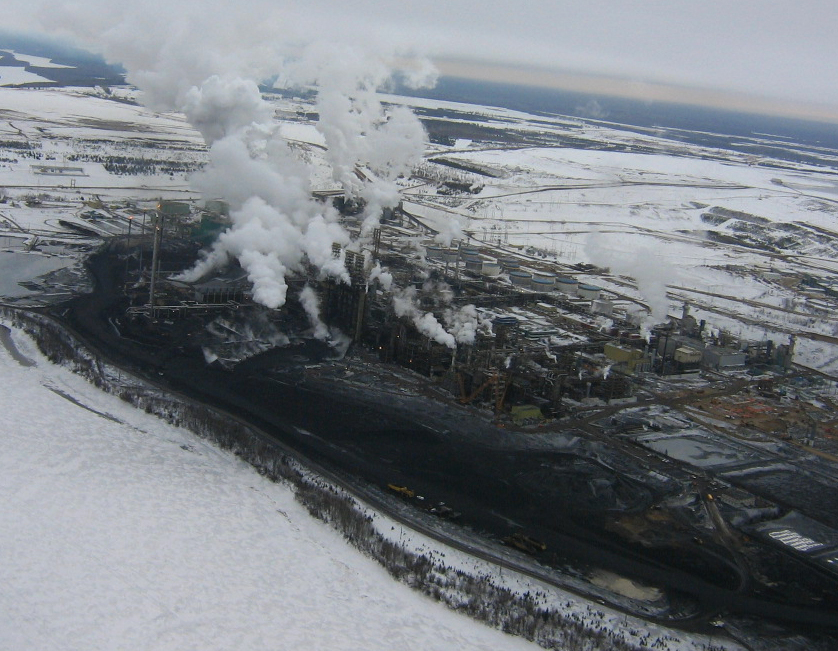 |
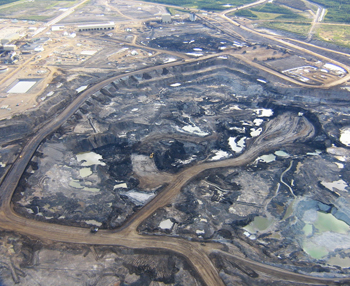 |
|
Bitumen
processing facility.
Emissions
from bitumen upgrading facilities in the Athabasca oil sands region of
Alberta, Canada, are recognized as an important source of these
contaminants.
Contaminants known as
polycyclic aromatic hydrocarbons (PAHs) measured within lake sediments
have increased in concentration since commercial development of the
bitumen resource began in the late-1960s.
PAHs
(and other contaminants) are a prominent component of bitumen. Image courtesy of John P. Smol (Queen's University).
|
Bitumen processing facility
near AR6.
Industrial facility on the Athabasca River near site AR6 (February 26,
2008). In March 2008, Kelly et al. completed a snow-pack survey and
reported high deposition of PAHs within a 50-km radius of AR6. They speculated
that this deposition pattern has existed for decades.
Image courtesy
of and copyrighted by Kevin Timoney (Treeline Ecological Research). |
Surface mining.
An example of active surface mining of bitumen (August 10, 2006). The
footprint of active surface mining has increased from ~40 to 71,500 ha
between 1974 and 2010. To date, about 170,000 ha of surface mine area has
been approved to operate. Image courtesy of and copyrighted by Kevin Timoney (Treeline Ecological Research). |
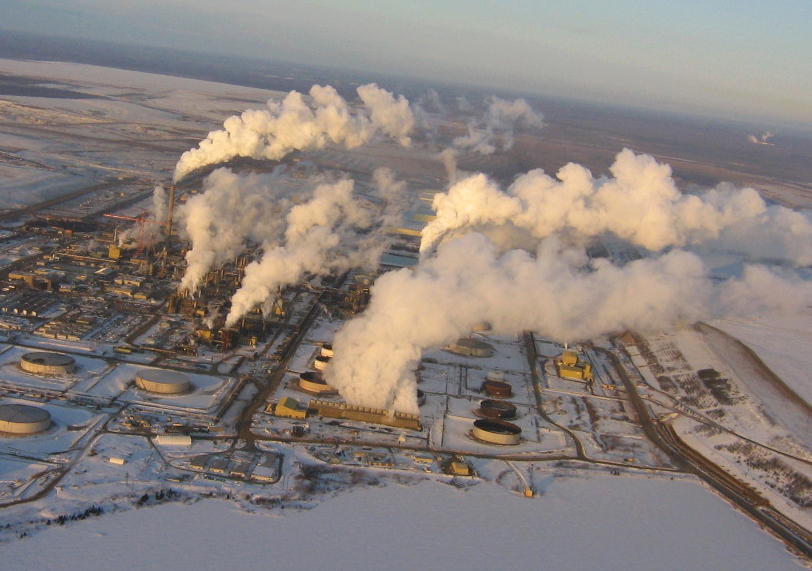 |
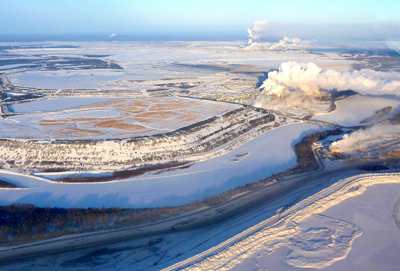
|
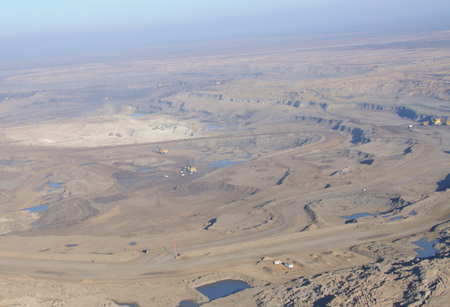 |
|
Industrial
facility in the Athabasca oil sands region.
The scale and pace of development of Alberta's oil
sands is impressive,
resulting in environmental concerns by some stakeholders and the public.
Emissions from bitumen processing facilities have been linked to the
distribution of contaminants across the regional landscape.
The spatial and
temporal patterns of contaminants in ecosystems can be recognized by direct
monitoring, as well as indirect techniques, such as those utilized by
researchers that examine lake sediment records. Image courtesy of and
copyrighted by Kevin Timoney (Treeline Ecological Research). |
Bitumen processing facility.
In 1980,
production was 100,000 barrels per day. Currently, ~1.5 million
barrels per day are produced. Production is expected to grow by 150%
over the next 15 years, providing significant economic benefits and
energy security for North America. Image courtesy of Jane Kirk
(Environment Canada). |
Surface mining.
Oil sands are natural hydrocarbon deposits composed of bitumen, clay,
sand, and water. These deposits makeup 97% of Canada’s proven oil reserves and are
predominantly found in northern Alberta and Saskatchewan. Bitumen is
recovered from oil sands deposits by surface mining and steam-injected
drilling. Much of the bitumen is too deep to be mined.
Image courtesy of John P. Smol (Queen's University). |
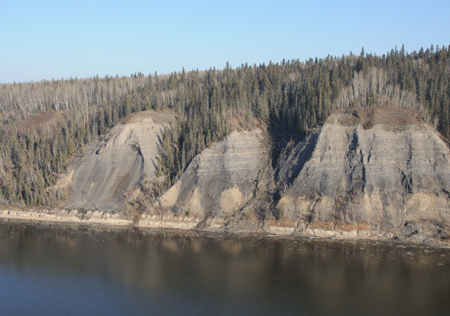 |
 |
 |
|
Natural PAH sources.
Polycyclic aromatic hydrocarbons (PAHs) are a natural component
of oil sands deposits. They are also produced by other natural processes
(forest fire, hydrocarbon deposits, volcanic eruptions), in addition to
human activities. Natural erosion of exposed oil sands deposits by
flowing waters has been suggested as an important process delivering
PAHs to waterways. Image courtesy of John P. Smol (Queen’s University). |
Example of study lake.
Small, shallow lakes with undisturbed catchments near major oil sands
operations were selected for sediment coring. Sediments at the bottom of
lakes provide an important natural archive of environmental change.
Patterns in the atmospheric deposition of contaminants associated with
Athabasca oil sands mining and processing activities can be determined
from sediment records.
Image courtesy of Jane Kirk (Environment Canada). |
Collection of sediment core.
Lakes
were visited by helicopter in March by an Environment Canada field
team. Sediment cores were collected from
the ice surface using a standard approach. In
a laboratory, sediment intervals can be dated to provide age estimates (e.g.
1970 AD ± 4 years).
Collectively, this yields a timeline of environmental changes that can
be measured from the sediment core. Image courtesy of Derek Muir (Environment
Canada). |
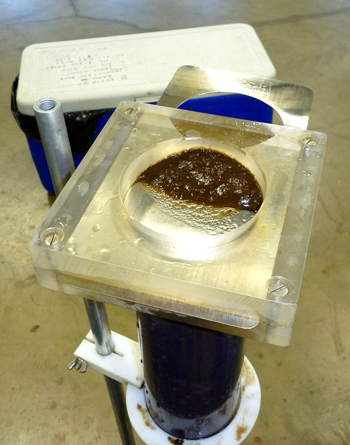 |
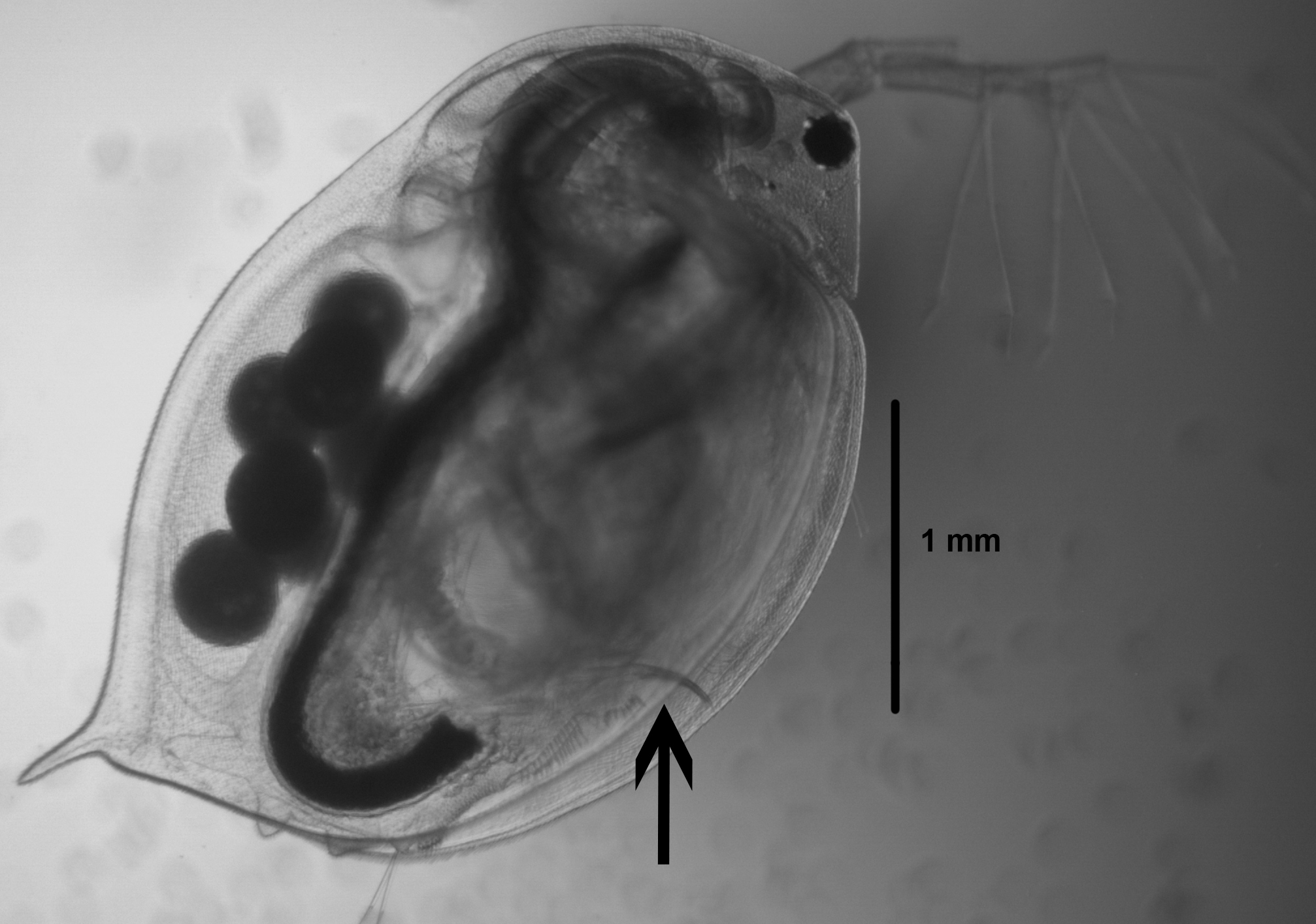 |
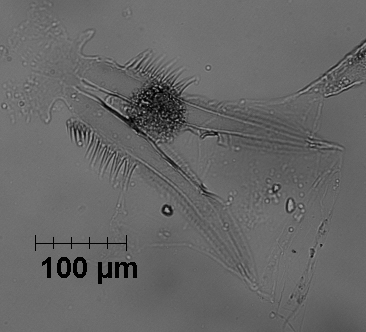 |
|
Extrusion of sediment layers
from core.
Layers of lake sediment are removed or “sectioned” at intervals
(typically 0.5 or 1.0 cm) from a core. In a laboratory, contaminants and
biological remains are analyzed from select sediment layers to
understand lake history and to “reconstruct” environmental changes.
Image courtesy of Jane Kirk
(Environment Canada). |
Daphnia.
An example of
Daphnia, commonly known as a water flea. Daphniids are
important grazers of algae and are eaten by fish, waterfowl, and
macroinvertebrates. Because Daphnia are sensitive to
environmental conditions, including contaminant levels, they are used
worldwide in toxicology and ecological studies. The arrow points to the
body part (postabdominal
claw)
that is often recovered as a "sedimentary remain" in lake sediment cores. Image
courtesy of Kim Lemmen (Queen's University). |
Daphnia
sedimentary remains.
Postabdominal
claws of the cladoceran Daphnia are well-preserved in lake
sediment cores. Daphnia are key members of a lake’s zooplankton
community and consume algae floating in the water column. In our study lakes, Daphnia have increased in relative abundance since ~1960-1970
because of greater algal production due to climate change. Image courtesy of Joshua Kurek (Queen's
University). |
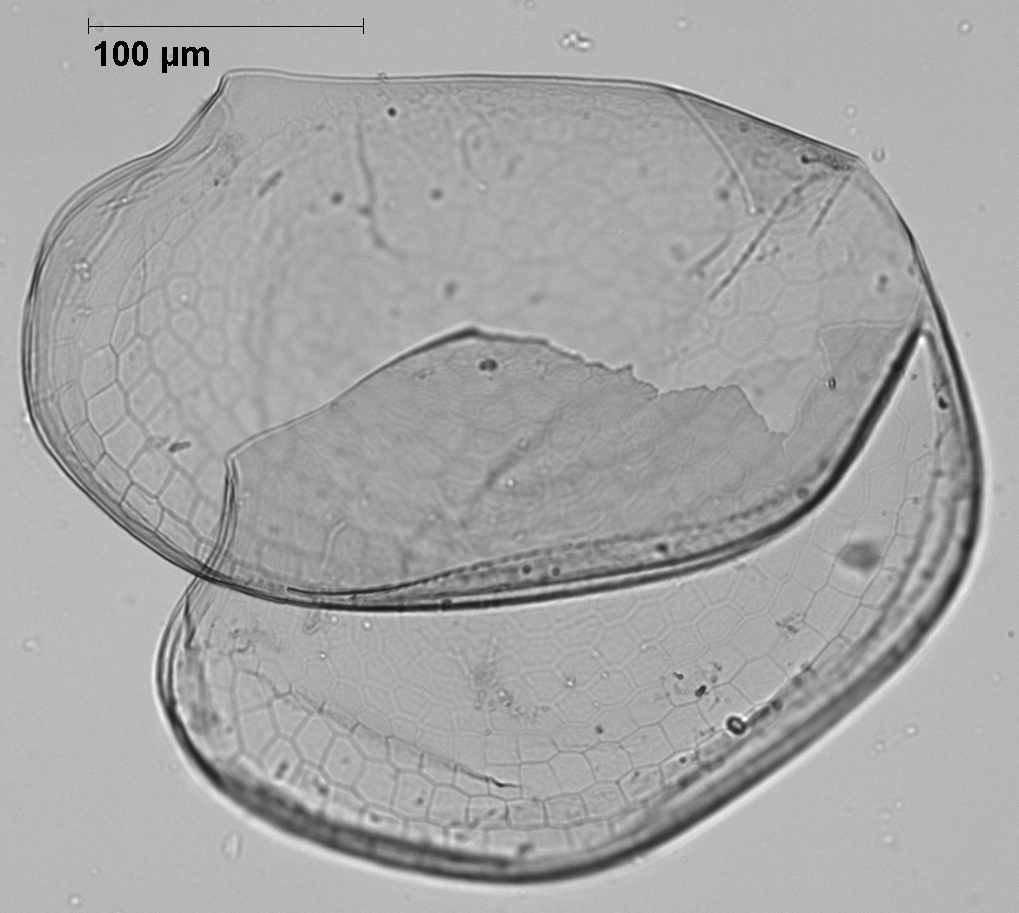 |
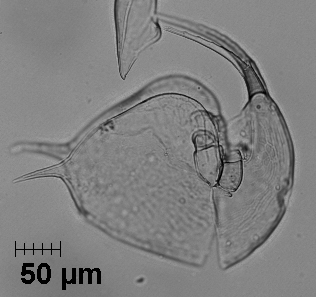 |
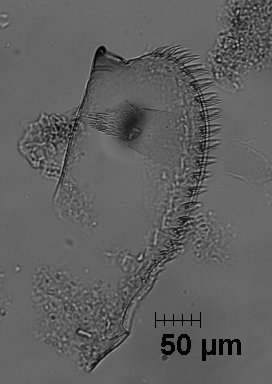 |
| Chydorus
sedimentary remain.
The carapace of the benthic (substrate-associated) cladoceran
Chydorus is a common biological remain in our study lakes from the
Athabasca oil sands region of Alberta, Canada.
Image courtesy of Joshua Kurek
(Queen's University). |
Bosmina sedimentary remains. Most body parts of the pelagic
(open-water) cladoceran Bosmina are well-preserved in lake sediment
cores. Pictured here is a headshield (right) and carapace (left)
magnified at 400x. Image
courtesy of Joshua Kurek (Queen's University). |
Alona
sedimentary remain.
The body parts of some zooplankton, such as cladocerans, are
recognizable as biological remains in lake sediments with aid of a
microscope. This postabdomen of the shallow-water genus
Alona is pictured magnified at 400x.
Image courtesy of Joshua Kurek (Queen's University). |
